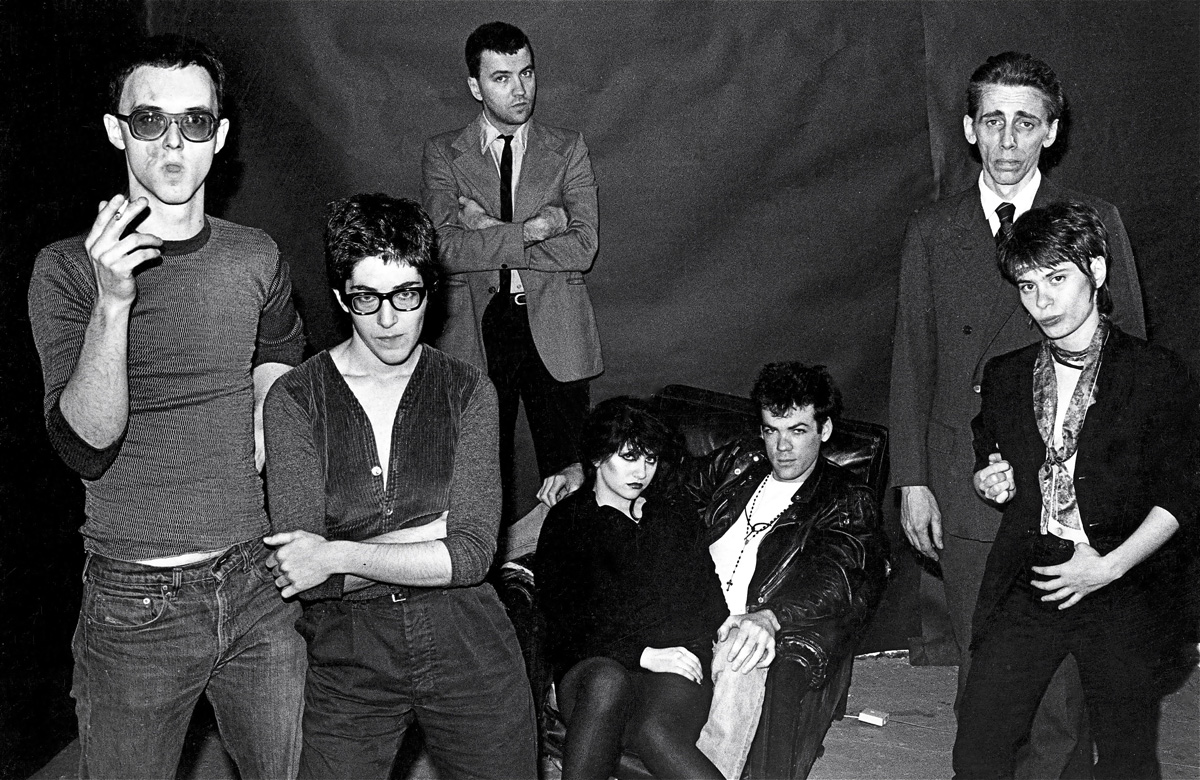The success of Pop Art in the 1960s opened the way for other new styles of representational art. “Photorealism” was a term applied to a group of artists whose fastidious paintings strove to imitate photography. Like pop artists, photorealists favored imagery drawn from everyday life and the American vernacular. OK Harris Gallery and the Louis Meisel Gallery, both situated in the thriving new gallery district, Soho, promoted the new style, which quickly emerged as a popular new “art movement” in the 1970s and 80s.
But what appeared at first to be a coherent art movement quickly dissolved, as painting methods evolved and subject matter expanded. Increasingly it became clear that the most enduring aspect of the movement was the legitimacy conferred on any subject by the time-consuming effort that the mere execution of the painting required. Today photorealism survives not on its own terms but as an adjunct in the work of artists like Jeff Koons and Damian Hirst who employed it as a way to bestow importance, scale and permanence to their work.
View a wider selection of Gallery 98’s photorealism art ephemera here.
Speiser Photo-Realism Collection Catalogue, 1973
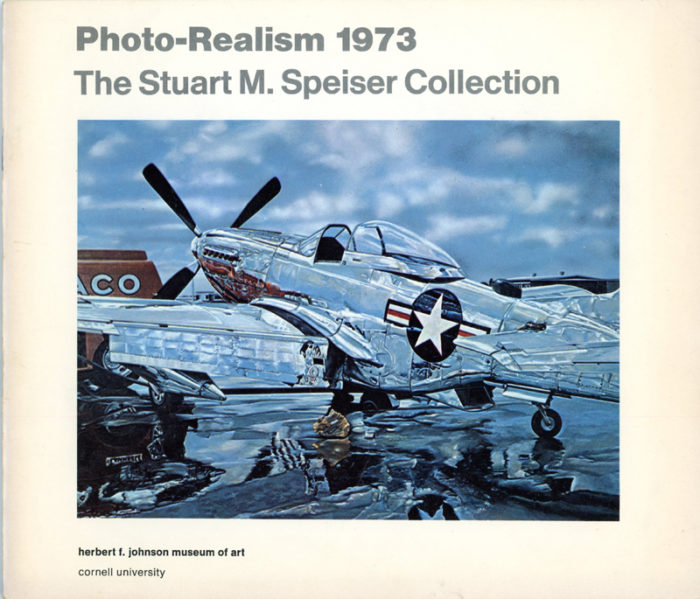
Louis Meisel Gallery, Photo-Realism 1973, The Stuart M. Speiser Collection, Cover by Ron Kleemann, 22 Page Catalogue, 1973. Size: 9 x 7.75 inches.
The early years of photorealism and the style’s flexibility can be seen in this catalogue devoted to the collection that Louis Meisel helped to assemble for Stuart M. Speiser, a collector who wanted all the works to include references to his passion for aviation. Among the featured artists are Robert Bechtle, Richard Estes and Malcolm Morely.
John Baeder, Corfu Diner, 1988

OK Harris Gallery, John Baeder, Card, 1989. Size: 6 x 4.25 Inches
Like many of the early photorealists, John Baeder staked out his own signature subject matter. Baeder’s forte was roadside diners — a form of vernacular architecture that has proven to have broad popular appeal.
Curt Hoppe, Dreesen’s Market, 1999

Dreesen’s Market, Curt Hoppe, Card, 1999. Size: 4 x 6 Inches.
Today Curt Hoppe is best known for his monumental black and white portrait paintings of aging East Village artists. Earlier in the 1990s Hoppe used his skills as a photorealist painter to capture life in the Hamptons. This postcard featuring a Hoppe still life was published by Dreesen’s, a popular donut and coffee spot in East Hampton.
Audrey Flack, Light & Energy, Exhibition Catalogue, 1983
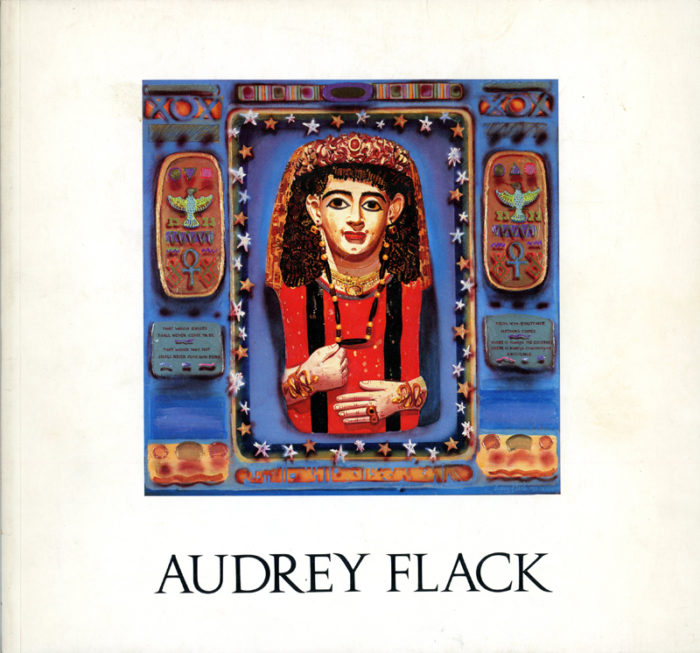
Louis K. Meisel Gallery, Audrey Flack, Light & Energy, 23 Page Exhibition Catalogue, 1983. Size: 9 x 8.5 Inches
Audrey Flack was featured in the Whitney Museum’s 22 Realists (1970), a seminal exhibition that helped identify the photorealist style. Flack has had a diverse career that includes depictions of current events in the 1960s, and the large-scale vanitas still lifes that made her reputation in the 70s. This catalogue from the 80’s shows another side of Flack’s work — her exploration of the spiritual by means of image and color.
Chuck Close, Photograph of Phillip Glass, 1986
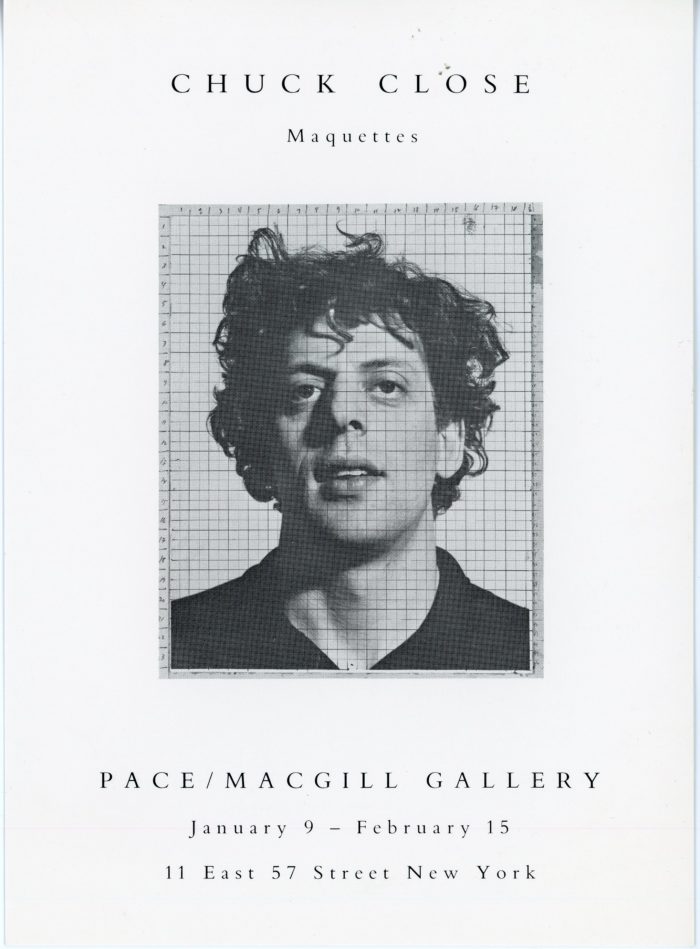
Pace / MacGill Gallery, Chuck Close, Maquettes, Card, 1986. Size: 5 x 7 Inches
Artist Chuck Close often exhibited photographs connected to his photorealist paintings. In both of these mediums, Close’s subject matter is not just the person he is portraying but also the abstract elements that are an integral part of his painting technique. This photo of Phillip Glass includes the grid lines Close used to transfer images to a canvas.
Duane Hanson, The Salesman (Lifesize Sculpture), 1992
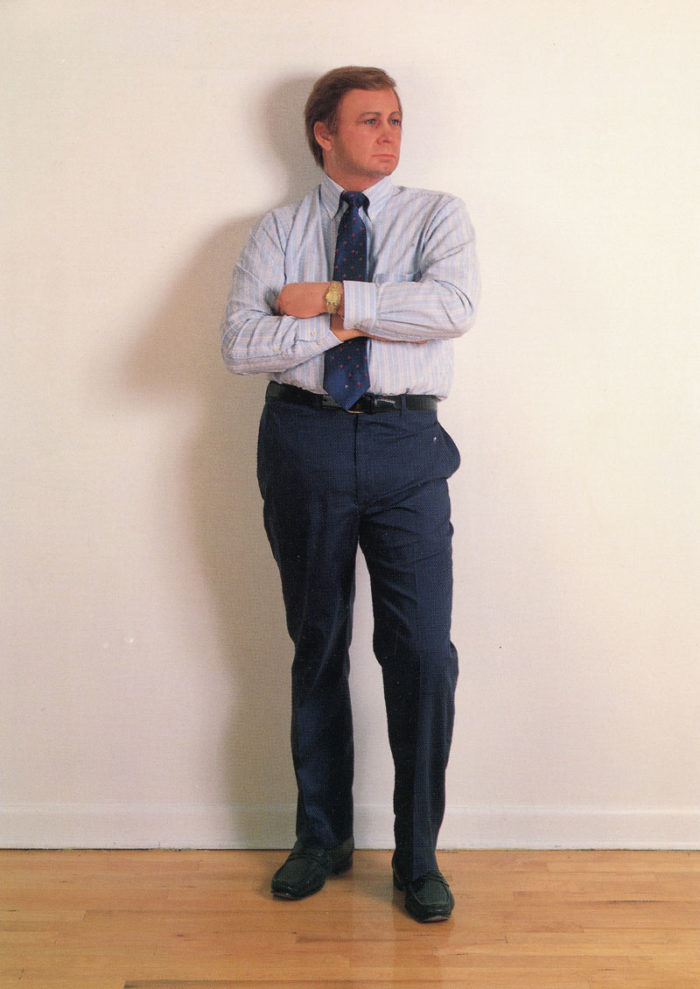
Helander Gallery, Duane Hanson, New Sculpture, Card, 1992. Size: 5 x 7 Inches.
While photorealism was primarily a painting style, Duane Hanson’s hyper-realist painted, polyvinyl sculptures are also associated with the movement. Through his choice of character types and his careful portrayal of clothing and pose, Hanson sought to capture American archetypes.
John De Andrea, Man & Woman (Lifesize Sculpture), 1981

OK Harris Gallery, John De Andrea, Card, 1982. Size: 4.25 x 6 Inches
On account of his obsessive attention to detail, John De Andrea is also a sculptor associated with photorealism. De Andrea focuses on the nude as subject. Integral to his work is the choice of attractive models and his sensitivity to pose and gesture.
View more of our photorealism art ephemera here.










